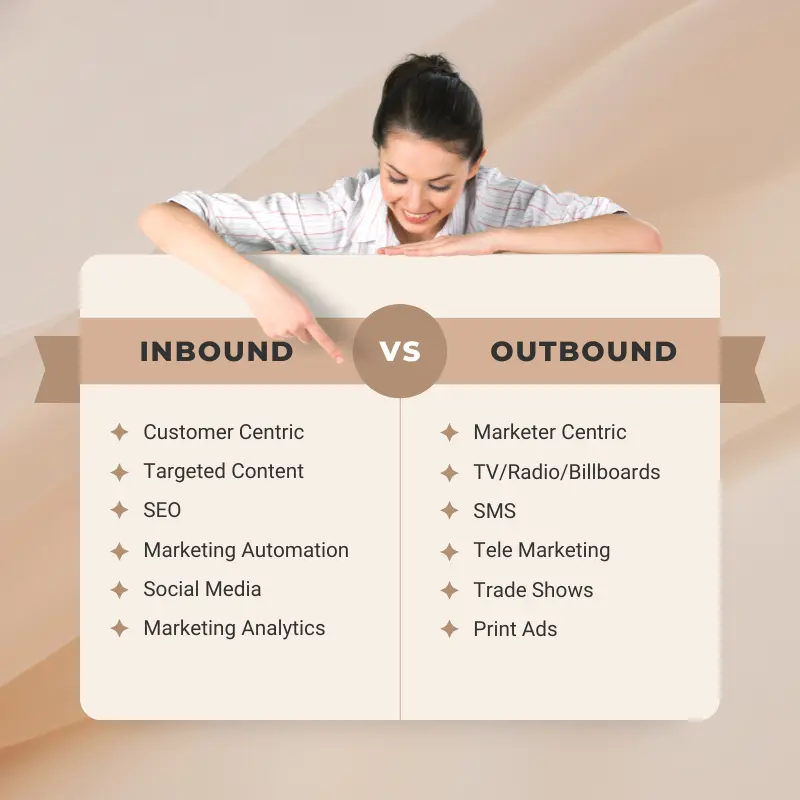Inbound Marketing Vs Outbound Marketing: What’s The Difference?
How you choose to fill the top of your sales funnel with leads likely involves some type of marketing.
5 min read
 Samantha Walls
:
Feb 28, 2023 3:07:00 PM
Samantha Walls
:
Feb 28, 2023 3:07:00 PM

In the hazardous waste industry, having a solid inbound marketing plan is key to attracting clients and demonstrating a dedication to environmental stewardship.
In fact, in a world where hazardous waste disposal is crucial for environmental protection, every company in this industry should have a robust inbound marketing strategy to attract potential clients and promote their services in a way that highlights their commitment to sustainability and responsible waste management.
With the right inbound marketing tools at their disposal, hazardous waste companies can not only establish their brand as a trustworthy and reliable option, but also play an active role in shaping a better future for our planet.
Before we dive into the inbound marketing tools that can help your hazardous waste company grow, it’s important to gain an understanding of why traditional marketing tactics no longer work for your hazardous waste company and how inbound marketing can help your business grow in today’s digital age.
Outbound marketing is a more traditional sales approach. It involves the strategy of reaching out to wide masses of people about products or services. You’re essentially throwing a large net, hoping to catch some people who may be interested in what you have to offer. In reality, outbound marketing methods, such as TV advertising or cold calling, are a waste of time and resources because you are likely reaching out to a large swath of people who don’t need your services.
Inbound marketing is a powerful approach to marketing that focuses on attracting potential customers to a business through helpful and informative content. For hazardous waste companies, inbound marketing can be particularly effective in generating leads and building brand awareness.
%20(1).webp?width=400&height=400&name=Inbound%20vs%20Outbound%20(800%20%C3%97%20800%20px)%20(1).webp)
One of the key benefits of inbound marketing for hazardous waste companies is the ability to showcase their expertise and build trust with potential customers. By creating high-quality content that addresses common questions and concerns related to hazardous waste management, these companies can establish themselves as thought leaders in the industry.
This can be especially important for businesses in a highly regulated industry like hazardous waste management, where potential customers may be looking for guidance on complex regulations and requirements.
Another benefit of inbound marketing for hazardous waste companies is the ability to target specific audiences with personalized content. By using tools like buyer personas and marketing automation, companies can tailor their messaging to different segments of their target market, whether that be specific industries, geographies or job titles. This can help to ensure that the right people are seeing the right messages at the right time, leading to higher conversion rates and more qualified leads.
Let’s jump into the must-have inbound marketing tools that can take your marketing efforts to the next level.
In this digital age, there are many tools available to help hazardous waste companies execute their inbound marketing strategies successfully.
From content creation to analytics, these tools can help companies improve their online presence, generate leads and ultimately grow their business.
Below are some of the most effective inbound marketing tools that make up a powerful marketing strategy.
Content marketing: Create blog posts, articles, videos and infographics that educate your audience about hazardous waste management and environmental protection. This can help establish your company as a thought leader in the industry and attract potential customers who are looking for solutions to their hazardous waste challenges.
Calls-to-action: These appear as buttons or links that encourage your visitors to take action, such as “download a whitepaper” or “request a free quote.” Calls-to-action should be included with content you produce.
Social media marketing strategy: Use social media platforms like LinkedIn, Twitter and Facebook to share your content and engage with your target audience. You can also use social media to participate in industry conversations, join relevant groups and connect with potential customers.
Search engine optimization (SEO): Optimize your website content and structure to rank higher on search engine results pages for relevant keywords related to hazardous waste management. This can help you attract organic traffic to your website and increase your visibility among potential customers.
Email marketing strategy: Use email newsletters and drip campaigns to nurture leads and stay in touch with your existing customers. You can share updates on industry news, new services or products, and promotions.
Webinars: Host webinars on topics related to hazardous waste management and invite potential customers to participate. This can help you establish your company as a thought leader in the industry and generate leads.
Customer testimonials and reviews: Use customer testimonials and reviews on your website and social media platforms to build trust with potential customers. This can help convince them to choose your company over competitors.
Analytics and tracking: Use analytics tools to track your website traffic, social media engagement, email open rates, and conversion rates. This can help you measure the effectiveness of your inbound marketing efforts and make data-driven decisions to optimize your strategy.
With the help of these powerful tools, hazardous waste businesses can effectively execute their marketing strategy and build trust with potential customers. Yet these tools are just one part of a well-executed inbound marketing strategy.
Using inbound marketing techniques, customers searching the internet for your product or service will naturally discover your brand.
Your prospects receive your message on their terms, making them far more receptive to what you have to say. You also spend little to no time convincing prospective customers that they need the hazardous waste disposal services that you offer. They’re already looking for them. Now that they’ve found you, you can focus on educating them about why you’re the best option to help them meet their needs.
A successful inbound marketing strategy helps you stand out in a competitive market and focuses on solving problems and providing answers. With hazardous waste, companies often deal with a lot of potential problems and are looking for these answers.
It requires an intense understanding of not only what customers need throughout their buyer’s journey but also understanding any anticipated questions they may have.
The inbound marketing methodology is based on growing your business through meaningful, lasting relationships with consumers, prospects and customers, and uses the inbound marketing tools above to help accomplish this goal.
There are three phases in the inbound marketing methodology:
Attract
Engage
Delight
The Attract phase focuses on “drawing in the right people with valuable content and conversations that establish you as a trusted advisor with whom they want to engage,” according to Hubspot.
Your buyer persona is particularly important in this phase since you need to identify potential customers’ challenges, pain points and goals related to the hazardous waste industry. Once you have this information, you can develop marketing content (blogs, social media and other content offers) that helps attract your ideal customers, known as buyer personas, to your website.
The Engage phase focuses on “presenting insights and solutions that align with their pain points and goals, so they are more likely to buy from you,” according to Hubspot.
In the early part of this phase, you’ll develop prospects into qualified leads. Your goal should be to convert and close a prospect by the end of this stage. While you’ll only typically need their email addresses at the beginning, as prospects move down your sales funnel, you’ll likely want to request more information in exchange for something valuable you provide to your prospects (such as an ebook).
Closing tools you may use to engage prospective customers include Customer Relationship Management (CRM) software, email and marketing automation.
The Delight phase focuses on nurturing the customer and developing a long-term relationship. Social media is a great way to delight customers because it provides a platform for them to ask questions and share feedback. Other tools that fall under this phase include surveys, calls-to-action and smart text. This is particularly important with hazardous waste companies, as there likely will be a need for ongoing business.
The best marketing strategies will use a flywheel approach, or a less linear approach to lead generation activities. A flywheel design also represents the fact that each action taken by a team member impacts another action.
Improving your internal processes will make your flywheel spin faster, offering the momentum needed to build your business.
In today’s highly competitive digital marketplace, it is critical for hazardous waste businesses to provide value to potential customers and build relationships through engagement. By establishing trust and demonstrating leadership, businesses can attract leads, improve conversion rates and grow their customer base.

How you choose to fill the top of your sales funnel with leads likely involves some type of marketing.

Inbound marketing seems easy on the surface. Create content people want and attract more people to your website.

Does Inbound Marketing for eCommerce actually work? In a crowded online retail marketplace, it is a worthwhile question to ask. Busy online retailers...